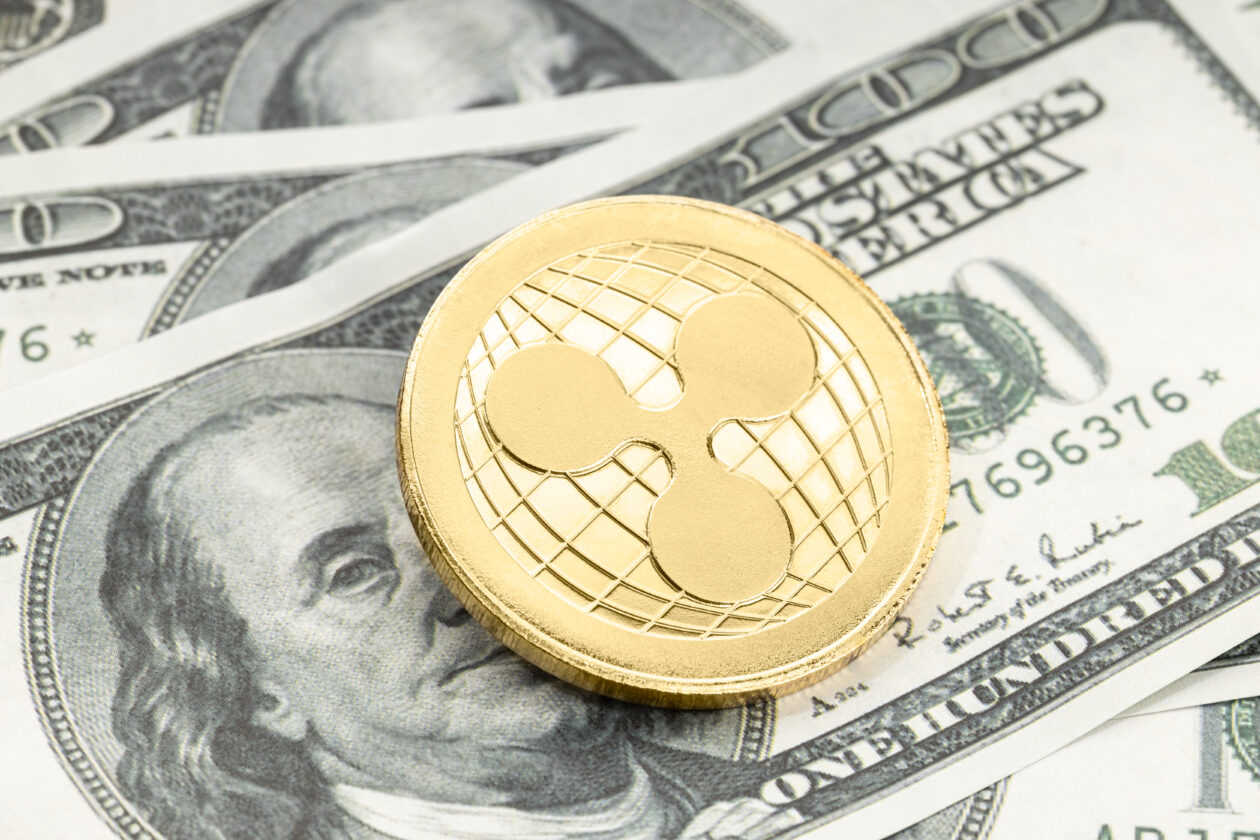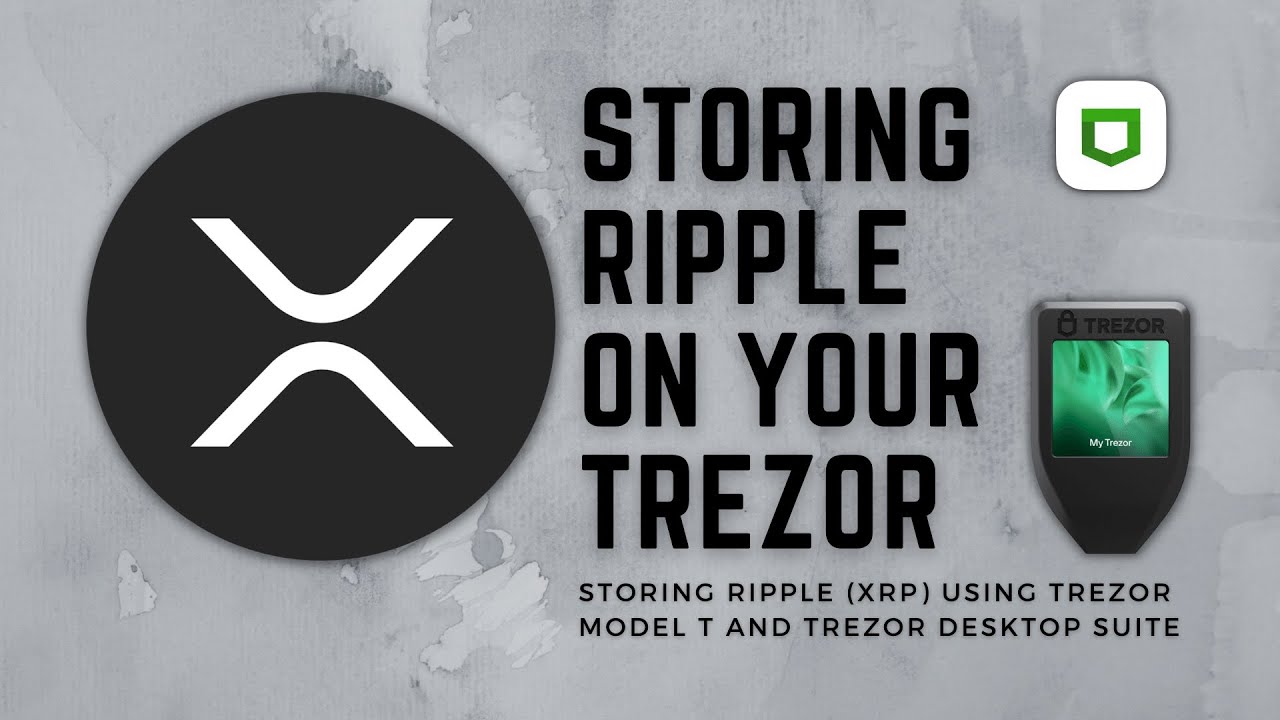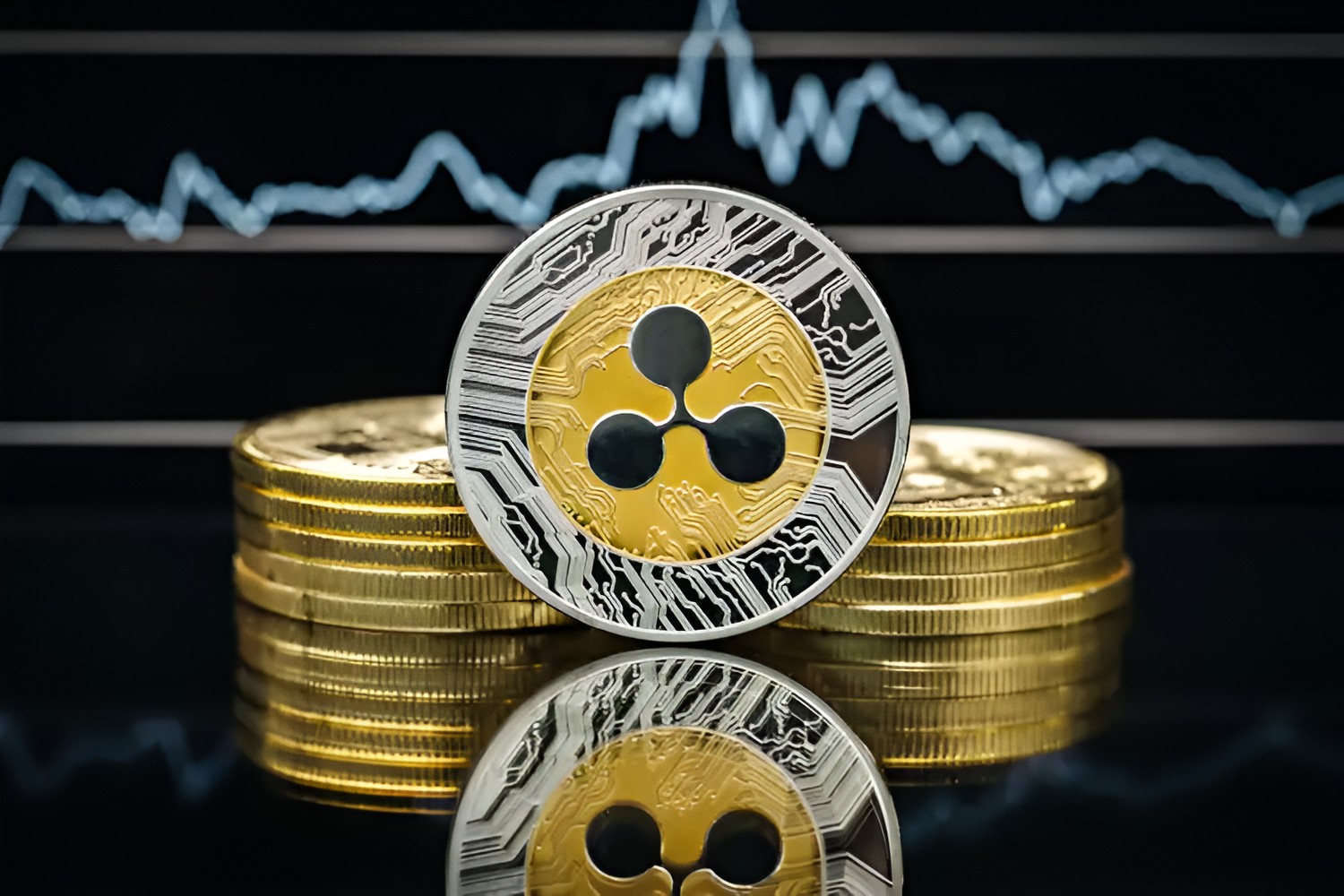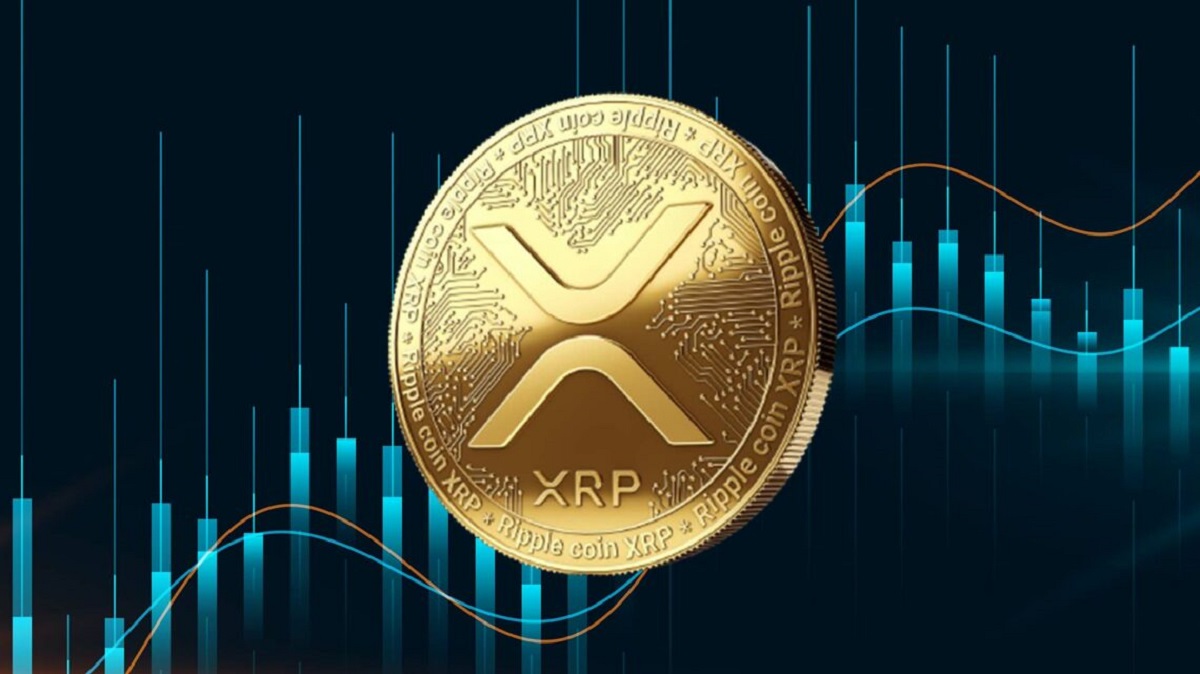Introduction
When it comes to the world of digital currencies, one name stands out among the crowd – Ripple. With its unique approach to decentralized money transfer and its growing popularity in the financial industry, Ripple has become an intriguing player in the cryptocurrency market. In this article, we will explore what Ripple is, how it works, and delve into its current value.
Ripple is not just a digital currency like Bitcoin or Ethereum; it is a technology platform that enables fast, secure, and low-cost international money transfers. Built on an open-source protocol, Ripple uses a consensus algorithm to validate transactions, making it more reliable and transparent than traditional banking systems.
Unlike Bitcoin, which relies on miners to validate transactions, Ripple depends on a network of independent validators, predominantly financial institutions, to maintain the integrity of the system. This unique approach allows Ripple to settle transactions in a matter of seconds, compared to the hours or days it takes for traditional wire transfers.
Thanks to its efficiency and scalability, Ripple has gained the attention of major financial institutions around the globe. Banks and payment providers are increasingly adopting Ripple’s technology to improve their cross-border payment services. This has propelled Ripple to become one of the largest cryptocurrencies by market capitalization.
Now, let’s take a closer look at how Ripple works and the use cases it offers in the financial sector.
What is Ripple?
Ripple, often referred to as RippleNet, is a technology platform that enables fast and secure international money transfers. It was created as a solution to the inefficiencies and high costs associated with traditional banking systems. Unlike other cryptocurrencies like Bitcoin or Ethereum, Ripple is not just a digital currency but a comprehensive infrastructure for global financial transactions.
Ripple operates based on a distributed ledger technology called the XRP Ledger. This ledger keeps track of all transactions and account balances within the Ripple network. It is decentralized, meaning that no single entity has control over it, making it more secure and resistant to tampering or fraud.
The core feature of Ripple is its ability to settle transactions in real-time. This is achieved through a consensus algorithm that allows the network’s validators, mainly financial institutions, to agree on the state of the ledger. By utilizing this consensus process, transactions on the Ripple network can be confirmed and settled within seconds, whereas traditional wire transfers can take hours or even days.
Ripple’s native cryptocurrency, called XRP, plays a crucial role in facilitating these transactions. It serves as a bridge currency, enabling the seamless exchange of value between different fiat currencies. When a payment needs to be made from one currency to another, XRP can be used as an intermediary, reducing the need for multiple currency conversions and lowering the associated costs.
Another important feature of Ripple is its focus on interoperability. The platform is designed to integrate with existing banking and payment systems, allowing financial institutions to smoothly adopt and incorporate Ripple’s technology into their operations. This interoperability makes it easier for banks and payment providers to offer faster, more efficient cross-border payment services to their customers.
In summary, Ripple is a technology platform built for fast, secure, and cost-effective international money transfers. Through its distributed ledger technology and consensus algorithm, Ripple enables near-instant settlement of transactions, reducing the reliance on traditional banking systems. With the use of its cryptocurrency XRP, Ripple facilitates seamless currency exchange, making it an attractive solution for financial institutions around the world.
How Does Ripple Work?
Ripple operates on a decentralized platform called RippleNet, which consists of a network of independent validators that authenticate and validate transactions. These validators are typically financial institutions that participate in the Ripple network. Unlike traditional banking systems that rely on a centralized authority to process transactions, Ripple uses a consensus algorithm to achieve agreement on the state of the network. This ensures that transactions are secure, reliable, and transparent.
When a user initiates a transaction on the Ripple network, it is first broadcasted to all the validators. Each validator independently verifies the transaction and ensures its validity. Once a consensus is reached among the validators, the transaction is considered confirmed and added to the XRP Ledger, which serves as the decentralized ledger for all transactions within the Ripple network.
Ripple relies on its native cryptocurrency, XRP, as a bridge currency to facilitate the seamless exchange of value between different fiat currencies. Let’s say User A wants to send money from their bank account in US dollars to User B, who has a bank account in Euros. Rather than going through the process of converting USD to Euros through multiple intermediaries, the transaction can be completed using XRP as an intermediary currency. User A’s dollars are converted to XRP, which is then sent to User B and automatically converted to Euros. This allows for fast and cost-effective currency exchange without the need for traditional banking intermediaries.
One key advantage of Ripple is its ability to settle transactions in almost real-time. While traditional banking systems may take hours or even days for cross-border transactions to be confirmed, Ripple can achieve settlement in a matter of seconds. This makes Ripple an attractive option for financial institutions and payment providers looking to enhance the speed and efficiency of their cross-border payment services.
In addition to its transactional capabilities, Ripple also offers smart contract functionality. Smart contracts are self-executing contracts with the terms of the agreement written directly into code. Within the Ripple network, these smart contracts enable the automation of certain financial processes, such as escrow services or payment conditions based on specific triggers.
To summarize, Ripple operates through a decentralized network of validators that authenticate and validate transactions. It leverages its native cryptocurrency, XRP, as a bridge currency to facilitate seamless currency exchange. With its ability to achieve near real-time settlement and the option for smart contract functionality, Ripple provides a reliable and efficient solution for international money transfers.
The Use Cases for Ripple
Ripple’s technology platform offers a wide range of use cases within the financial industry. Its ability to provide fast, secure, and cost-effective international money transfers has garnered the attention of banks, payment providers, and other financial institutions. Here are some key use cases for Ripple:
1. Cross-Border Payments
One of the primary use cases for Ripple is facilitating cross-border payments. Traditional cross-border transactions often involve multiple intermediaries, high costs, and lengthy settlement times. Ripple’s technology streamlines this process by enabling direct, near-instant transfers between different currencies using its native cryptocurrency, XRP. Financial institutions can leverage Ripple’s platform to offer faster and more cost-effective cross-border payment services to their customers.
2. Remittances
Ripple has the potential to revolutionize the remittance industry. With millions of people around the world relying on remittance payments from abroad, the high fees and slow processing times associated with traditional methods can be a significant burden. By utilizing Ripple’s platform, remittance providers can offer faster and cheaper transfers, improving the overall accessibility and affordability of remittance services.
3. Micropayments
Ripple’s low transaction fees and fast settlement times make it an ideal solution for micropayments. Micropayments are small-value transactions, often below a dollar, and are typically seen in industries such as online gaming, content streaming, or pay-per-click advertising. Ripple’s platform allows for seamless and cost-effective micropayments, opening up new business opportunities in the digital economy.
4. Financial Institutions and Banks
Ripple’s technology is gaining traction among financial institutions and banks seeking to optimize their cross-border payment infrastructure. By integrating Ripple’s platform into their existing systems, financial institutions can improve operational efficiency, reduce costs, and enhance customer satisfaction. Ripple’s ability to settle transactions quickly and securely is particularly appealing to financial institutions that require fast and efficient payment processing.
5. Tokenization of Assets
Ripple’s blockchain technology can be utilized to tokenize various real-world assets, such as currencies, commodities, or even real estate. Tokenization represents the representation of physical assets as digital tokens on a blockchain, which can be easily transferred and traded. This opens up possibilities for fractional ownership, increased liquidity, and lower transaction costs in asset trading.
These are just a few examples of the many potential use cases for Ripple within the financial industry. As the adoption of Ripple’s technology continues to grow, we can expect to see even more innovative applications emerge.
The Price History of Ripple
The price history of Ripple, like any other cryptocurrency, has been subject to significant volatility and fluctuations since its inception. Ripple’s native cryptocurrency, XRP, was first introduced to the market in 2012 by Ripple Labs Inc. Since then, it has experienced both dramatic growth and periods of decline.
In the early years, XRP had a relatively low market value, with its price remaining under $1. However, in 2017, the cryptocurrency market experienced a substantial bull run, and Ripple saw a significant surge in its price. XRP reached its all-time high of around $3.84 in January 2018, driven by heightened investor interest and market speculation.
Following the peak, the price of XRP experienced a sharp decline, as the entire crypto market went through a corrective phase. The price settled at a more stable range for the remainder of 2018 and early 2019, fluctuating between $0.20 and $0.40.
In late 2020 and early 2021, the cryptocurrency market experienced another bull market, and Ripple’s price saw a notable increase. XRP reached a multi-year high of over $1.90 in April 2021. The surge in price was partly fueled by positive news surrounding Ripple’s ongoing legal battle with the U.S. Securities and Exchange Commission (SEC).
However, it’s important to note that the price of Ripple, like other cryptocurrencies, can be influenced by various factors beyond market sentiment. Regulatory developments, adoption by major financial institutions, and market dynamics can all impact the price of XRP.
As with any investment, it is essential to conduct thorough research and consider the volatility of the cryptocurrency market before making any investment decisions. It’s also important to remember that past price performance is not indicative of future performance, and the price of XRP can be highly unpredictable.
Despite the fluctuations, Ripple has managed to establish itself as one of the largest cryptocurrencies by market capitalization. Its potential for fast and low-cost international money transfers has attracted the attention of investors and financial institutions alike, shaping the price history and market dynamics of XRP.
Factors Influencing the Value of Ripple
Several factors can influence the value of Ripple (XRP), just like any other cryptocurrency. Understanding these factors is essential for investors and enthusiasts who follow Ripple’s market trends. Here are some key factors that can influence the value of Ripple:
1. Market Sentiment
Market sentiment, which is influenced by factors such as news, investor perception, and overall market conditions, plays a significant role in determining the value of Ripple. Positive news, such as partnerships or endorsements from prominent financial institutions, can drive up the demand for Ripple and increase its value. On the other hand, negative news or regulatory uncertainty can lead to a decline in value as investors become cautious.
2. Adoption and Partnerships
The level of adoption and partnerships Ripple secures can have a significant impact on its value. When major financial institutions, banks, or payment providers announce plans to integrate Ripple’s technology, it can boost confidence in the platform and increase demand for XRP. Achieving widespread adoption and forming strategic partnerships can create a network effect, driving the value of Ripple higher.
3. Regulatory Environment
The regulatory environment surrounding cryptocurrencies, including Ripple, can greatly influence its value. Regulatory clarity and supportive frameworks can provide confidence to investors and financial institutions, potentially increasing demand for Ripple. Conversely, regulatory scrutiny or restrictive measures can create uncertainty and negatively impact the value of Ripple.
4. Market Liquidity
The liquidity of Ripple’s market, determined by the trading volume and order book depth, can affect the value of XRP. Higher liquidity makes it easier to buy and sell Ripple, facilitating price discovery and reducing the impact of large buy or sell orders on the market. Increased liquidity often leads to greater stability and broader participation in the Ripple market.
5. Overall Cryptocurrency Market Trends
Ripple’s value is also influenced by the broader trends in the cryptocurrency market. When the market experiences a bull run, with increased demand and rising prices for cryptocurrencies as a whole, it can positively impact the value of Ripple. Similarly, during a market downturn or bearish phase, Ripple’s value may be influenced by the overall market sentiment.
It’s important to note that the cryptocurrency market is highly volatile and can be influenced by numerous unpredictable factors. The value of Ripple can fluctuate greatly within short periods of time, and investors should exercise caution and conduct thorough research before making investment decisions.
By staying informed about the latest developments, monitoring market trends, and understanding the factors that influence Ripple’s value, investors can make more informed decisions regarding their involvement with XRP.
The Current Value of Ripple
As of [date], the current value of Ripple (XRP) is [price]. However, it’s important to note that cryptocurrency prices can be highly volatile and can change rapidly. Therefore, it’s advisable to check the real-time market value of Ripple through trusted cryptocurrency exchanges or financial platforms.
Ripple has been one of the top cryptocurrencies in terms of market capitalization. Its value is influenced by various factors, including market sentiment, demand from investors and financial institutions, adoption levels, and regulatory developments.
In recent years, Ripple’s value has seen both significant growth and periods of decline along with the overall cryptocurrency market. Its value reached an all-time high in [year] when it surged to [price]. However, it subsequently experienced a sharp correction along with the broader market, settling at lower levels.
The current price of Ripple may be influenced by several factors specific to the cryptocurrency itself and the broader market conditions. Major announcements such as partnerships with financial institutions, regulatory clarity or changes, and shifts in investor sentiment can impact the value of Ripple.
It’s worth noting that while the current value of Ripple can be a helpful indicator, cryptocurrency investments carry inherent risks due to their volatility. It’s important for investors to conduct thorough research, consider their risk tolerance, and seek professional advice when making investment decisions in cryptocurrencies.
Moreover, as the cryptocurrency market operates around the clock, the value of Ripple can fluctuate even within short periods. Traders and investors should closely monitor the market and stay updated with the latest news and developments to make informed decisions.
Considering these factors, anyone interested in investing or trading Ripple should keep in mind that the current value is subject to change and to exercise caution when participating in the volatile cryptocurrency market.
Understanding Ripple’s Market Cap
Ripple’s market capitalization, also known as market cap, is a crucial metric for understanding the size and value of Ripple within the cryptocurrency market. Market cap is calculated by multiplying the current price of Ripple (XRP) by the total number of XRP coins in circulation.
Ripple’s market cap is influenced by two factors: the price of XRP and the circulating supply. The price of XRP reflects the value that the market assigns to each individual coin, while the circulating supply represents the number of XRP coins available for trading.
Market cap provides insights into the relative standing of Ripple compared to other cryptocurrencies. It shows the total value of Ripple at a given point in time and plays a role in determining its position in rankings or indices. As Ripple’s market cap increases, it indicates growing demand and investor confidence in the cryptocurrency.
It’s important to note that market cap does not represent the actual amount of money invested in Ripple or its liquidity. Instead, it serves as a measure of the perceived value and market perception of the cryptocurrency. Market cap can fluctuate based on market conditions, demand, and other external factors that impact the price of XRP.
Ripple has historically held a significant market cap, consistently ranking among the top cryptocurrencies. Its market cap has been influenced by factors such as partnerships with financial institutions, regulatory developments, and market sentiment. However, it’s important to consider that market cap alone does not guarantee the future success or value of Ripple. Other factors, such as technology advancements, adoption rates, and competitive landscape, also play a role in shaping its value and prospects.
Investors and market participants use market cap as a tool to assess the relative size and value of cryptocurrencies. However, it is important to conduct comprehensive research and consider other fundamental and technical factors when making investment decisions. Market cap provides a snapshot of Ripple’s position in the cryptocurrency market, but it should be used in conjunction with other metrics and analysis to gain a comprehensive understanding of the cryptocurrency’s potential.
In summary, Ripple’s market cap is a measure of the total value attributed to Ripple based on its price and circulating supply. It provides insights into the cryptocurrency’s standing within the market and its perceived value. Understanding Ripple’s market cap can be helpful for investors and enthusiasts, but it should be considered alongside other factors when assessing the overall potential and investment viability of Ripple.
Ripple’s Future Potential
Ripple, with its unique approach to decentralized money transfer and growing adoption by financial institutions, holds exciting potential for the future. Here are key factors contributing to Ripple’s future potential:
1. Increasing Adoption
Ripple’s technology has gained significant traction among major financial institutions and banks seeking to enhance their cross-border payment capabilities. As more institutions adopt Ripple’s platform, it is expected to drive increased usage, liquidity, and demand for XRP. The broader adoption of Ripple by financial institutions could potentially facilitate faster and more cost-effective global money transfers for businesses and individuals alike.
2. Expanding Partnerships
Ripple continues to forge partnerships with financial institutions and payment providers around the world. Collaborations with major players in the industry have the potential to drive the adoption of Ripple’s technology and increase its market presence. By expanding its network of partnerships, Ripple aims to solidify its position as a leading provider of blockchain-based solutions for cross-border payments.
3. Regulatory Clarity
The regulatory environment surrounding cryptocurrencies, including Ripple, is evolving. The clarification of regulations can provide a boost to Ripple’s adoption, as it fosters confidence among financial institutions and investors. Regulatory clarity can also open doors for greater integration of Ripple’s technology into existing financial systems, ultimately driving its future potential.
4. Technological Advancements
Ripple continues to work on improving its technology, aiming to enhance scalability, security, and speed. The development of new features and upgrades to the Ripple protocol can contribute to its wider adoption and increased efficiency. Innovations such as Interledger Protocol (ILP) integration and the development of the XRP Ledger can unlock new use cases and expand Ripple’s reach beyond cross-border payments.
5. Growing Global Remittance Market
The global remittance market represents a significant opportunity for Ripple. With millions of people relying on remittance payments, Ripple’s technology has the potential to streamline the process, reduce costs, and increase accessibility. As the demand for fast and affordable cross-border transfers continues to grow, Ripple is well-positioned to capture a substantial market share.
While Ripple’s future potential is promising, it’s important to acknowledge the inherent risks and uncertainties associated with the cryptocurrency market. Factors such as market volatility, regulatory developments, and competition should be carefully considered when assessing Ripple’s future prospects.
In summary, Ripple’s future potential lies in increasing adoption, expanding partnerships, regulatory clarity, technological advancements, and the growing global remittance market. As Ripple continues to establish itself as a leading player in the blockchain-based cross-border payments landscape, its potential for disruption and innovation remains high.
Conclusion
Ripple has emerged as a significant player in the cryptocurrency market, offering a unique approach to decentralized money transfer. With its fast, secure, and cost-effective international payment solutions, Ripple has gained momentum and adoption among financial institutions, banks, and payment providers worldwide.
Throughout this article, we explored what Ripple is, how it works, and its current value. We learned that Ripple’s technology platform, RippleNet, enables near-instant settlement of transactions through a network of independent validators. Ripple’s native cryptocurrency, XRP, serves as a bridge currency, facilitating seamless currency exchange.
Ripple’s value is influenced by a range of factors, including market sentiment, adoption by financial institutions, regulatory developments, and overall cryptocurrency market trends. Its market cap provides insights into Ripple’s perceived value and market standing relative to other cryptocurrencies.
Looking towards the future, Ripple holds significant potential for continued growth and disruption in the financial industry. Increasing adoption, expanding partnerships, regulatory clarity, technological advancements, and the growing global remittance market all contribute to Ripple’s potential for further success and innovation.
However, it’s important to approach cryptocurrency investments with caution. The cryptocurrency market is highly volatile and subject to rapid price fluctuations. Investors should conduct thorough research, consider risk tolerance, and seek professional advice before making investment decisions.
Overall, Ripple’s technology and its focus on transforming cross-border payments position it as a key player in the global financial landscape. As it continues to evolve and navigate the regulatory landscape, Ripple has the potential to reshape the way international transactions are conducted, improving efficiency, reducing costs, and increasing accessibility for businesses and individuals around the world.

























